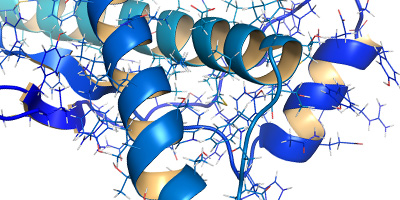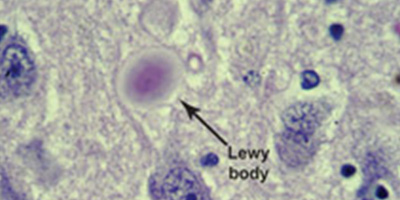
Be a Part of the Fight to End Alzheimer's
Be a Part of the Fight to End Alzheimer's
The millions of people impacted by Alzheimer's disease need your help. Your generosity can help us provide care and support to those facing the challenges of Alzheimer's and advance global research. Please make a gift today.
Donate NowNormal Pressure Hydrocephalus
Normal pressure hydrocephalus (NPH) is a brain disorder in which excess cerebrospinal fluid (CSF) accumulates in the brain's ventricles, causing thinking and reasoning problems, difficulty walking, and loss of bladder control.
About normal pressure hydrocephalus
Normal pressure hydrocephalus is a brain disorder in which excess cerebrospinal fluid accumulates in the brain’s ventricles, which are fluid-filled chambers. Normal pressure hydrocephalus is called "normal pressure" because despite the excess fluid, CSF pressure as measured during a spinal tap is often normal. As brain ventricles enlarge with the excess CSF, they can disrupt and damage nearby brain tissue, leading to difficulty walking, problems with thinking and reasoning, and loss of bladder control.
Normal pressure hydrocephalus can sometimes be treated with surgical insertion of a shunt, a long, thin tube that drains excess CSF from the brain to the abdomen. Surgery is most likely to help correct difficulties walking, but thinking changes and loss of bladder control are less likely to improve. Shunting doesn’t help everyone with normal pressure hydrocephalus, and there’s uncertainty about how best to identify those most likely to benefit. There’s also a lack of data showing how long the benefit of shunting may last for those whose symptoms improve.
Prevalence
Normal pressure hydrocephalus primarily affects people in their 60s and 70s. The Hydrocephalus Association estimates that nearly 700,000 adults have normal pressure hydrocephalus, but it is often misdiagnosed as Alzheimer’s or Parkinson’s disease. In fact, less than 20 percent of people with the disease are properly diagnosed.
Learn more: Key Types of Dementia
Causes and risk factors
In some cases, normal pressure hydrocephalus is caused by other brain disorders such as a tumor, head injury, hemorrhage, infection or inflammation. But in most cases, the cause of the fluid buildup remains unknown.
Symptoms
The following symptoms are considered hallmarks of normal pressure hydrocephalus:
- Difficulty walking that's sometimes compared to the way a person walks "on a boat," with the body bent forward, legs held wide apart and feet moving as if they're "glued to the deck."
- Mild dementia that involves loss of interest in daily activities, forgetfulness, difficulty completing routine tasks and short-term memory loss.
- Decline in thinking skills that includes overall slowing of thought processes, apathy, impaired planning and decision-making, reduced concentration, and changes in personality and behavior.
- Loss of bladder control, which tends to appear somewhat later in the disease than difficulty walking and cognitive decline.
Diagnosis
In a Mayo Clinic study, among 41 older adults with suspected normal pressure hydrocephalus, all had difficulty walking, 30 experienced cognitive decline, and 14 reported loss of bladder control. Only 12 of the 41 had all three symptoms.
To confirm a diagnosis of normal pressure hydrocephalus, one or more of the following tests are done:
- Brain imaging: Imaging of the brain’s structure to detect enlargement of the ventricles, often with magnetic resonance imaging (MRI) or CT scan, plays a key role in diagnosing normal pressure hydrocephalus. Several brain disorders, including Alzheimer’s disease, can cause overall brain tissue shrinkage that makes the ventricles look larger than normal. In normal pressure hydrocephalus, brain tissue may not appear shrunken even though the ventricles are enlarged.
- Clinical examination: Because the clinical picture for normal pressure hydrocephalus may vary and symptoms may overlap with those of Alzheimer’s and other dementias, experts recommend that a person with suspected normal pressure hydrocephalus undergo examination by a neurologist with extensive experience evaluating brain disorders that affect movement, thinking skills, and physical functions.
- Cerebrospinal fluid tests: CSF tests to predict shunt responsiveness and/or determine shunt pressure include lumbar puncture, external lumbar drainage, measurement of CSF outflow resistance, intracranial pressure (ICP) monitoring and isotopic cisternography.
Outcomes
Treatment
Normal pressure hydrocephalus is one of the few causes of dementia that can be controlled or reversed with treatment. If symptoms and results from an evaluation and MRI point to normal pressure hydrocephalus, a high-volume spinal tap may be used to identify if an individual has the potential to benefit from surgical insertion of a shunt. In this procedure, doctors remove a large amount of spinal fluid and observe the individual for 30 to 60 minutes, looking for any improvements in walking or thinking and reasoning. Most people originally suspected of having normal pressure hydrocephalus do not improve following a cerebrospinal fluid removal test.
Researchers have not found effective nonsurgical treatments for normal pressure hydrocephalus. Drugs that remove excess fluid throughout the body, such as diuretics, don’t appear to improve symptoms of normal pressure hydrocephalus. More research is needed to:
- Understand the prevalence of normal pressure hydrocephalus.
- Show how the excess CSF involved in normal pressure hydrocephalus causes symptoms affecting movement, thinking and bodily functions.
- Clarify the possible benefits and ideal targets of shunt insertion.
Help is available
The Alzheimer's Association can help you learn more about Alzheimer's disease and other dementias, and help you find local support services. Call our 24/7 Helpline at 800.272.3900.
Hydrocephalus Association provides support, education and advocacy for people whose with hydrocephalus, their families and the professionals who work with them. Call the association at 888.598.3789.
Related Pages

The Alzheimer’s Association is in your community.
Find Your Local Chapter
Learn how Alzheimer’s disease affects the brain.
Take the Brain Tour




